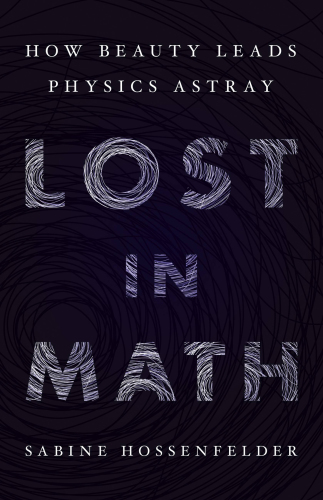
Lost in Math
How Beauty Leads Physics Astray
کتاب های مرتبط
- اطلاعات
- نقد و بررسی
- دیدگاه کاربران
نقد و بررسی

April 15, 2018
A theoretical physicist delivers an entertaining attack on her profession, arguing that it has fallen in love with theories that bear little relation to reality.In her first book for a popular audience, a "story of how aesthetic judgment drives contemporary research," Hossenfelder (editor: Experimental Search for Quantum Gravity, 2017), a research fellow at the Frankfurt Institute for Advanced Studies in Germany, expresses despair that the golden age of physics ended with her parents' generation. By the 1970s, a torrent of Nobel Prizes went to physicists who unified a confusing mélange of subatomic particles into the elegant standard model and did the same for three out of four fundamental forces. While a brilliant achievement, the standard model failed to answer basic questions such as the nature of dark matter and energy, matter-antimatter asymmetry, and the impossibility of quantizing gravity. The author maintains that fashionable new theories addressing these issues are preoccupied with beauty and naturalness to the neglect of actual observation. Thus, supersymmetry solves several problems by predicting dozens of new subatomic particles that the most powerful accelerators have failed to find. String theory seems to explain almost everything, but its basis is pure mathematics, and its postulates are untestable by any conceivable technology. "I can't believe what this once-venerable profession has become," writes Hossenfelder. "Theoretical physicists used to explain what was observed. Now they try to explain why they can't explain what was not observed. And they're not even good at that....But there are so many ways not to explain something." A take-no-prisoners interviewer, the author asks pointed questions of the giants of physics and is not shy about arguing with them.Even educated readers will struggle to understand the elements of modern physics, but they will have no trouble enjoying this insightful, delightfully pugnacious polemic about its leading controversy.
COPYRIGHT(2018) Kirkus Reviews, ALL RIGHTS RESERVED.

April 30, 2018
Science writer and researcher Hossenfelder argues persuasively that physics has stalled because of a focus on mathematical “elegance” rather than reality. Hossenfelder begins with supersymmetry and the standard model of particle physics, created to explain all the elementary particles discovered in the 20th century. Supersymmetry theory, she writes, is accepted because it fits so well into previous theories. But it also predicts that more particles should be found at energies just above where physicists discovered the Higgs boson, but none have yet been discovered. Though physicists from Newton to Einstein have prized mathematical beauty in theories, Hossenfelder sees this belief as a dangerous limitation. Elegant theories, she observes, don’t explain dark matter and dark energy, or how to find multiverses. Along the way, Hossenfelder introduces an array of important researchers, including stoic Nobel laureate Steven Weinberg and social media-savvy Australian astrophysicist Katherine “Astrokatie” Mack. This layreader-friendly, amusing treatise gives an enlightening look at a growing issue within physics.

May 1, 2018
The Romantic poet John Keats anticipated the thinking of modern physicists when he declared, Beauty is truth. To be sure, when Paul Dirac, Henri Poincar�, and Werner Heisenberg identified beauty as their guide to truth, they defined that beauty as the elegance and simplicity of mathematics. But after decades of working closely with the world's leading physicists, Hossenfelder challenges her colleagues' single-minded commitment to mathematical beauty. That commitment, she argues, has led to experimental futility and intellectual confusion. Readers indeed see how physicists irrationally committed to mathematical beauty have drifted away from empirical checks as they have researched supersymmetry, multidimensional string theory, and loop quantum gravity, generating aesthetically appealing formulas but few verifiable predictions. Even when physicists have teased predictions out of their formulas, they have repeatedly failed?despite costly and technologically sophisticated attempts?to confirm those predictions. Emphasizing how much researchers have achieved in quantum mechanics while using math that is decidedly ugly, Hossenfelder urges her colleagues to start focusing on reality, not conceptual style. A provocative appeal for unattractive but fruitful science.(Reprinted with permission of Booklist, copyright 2018, American Library Association.)

























دیدگاه کاربران